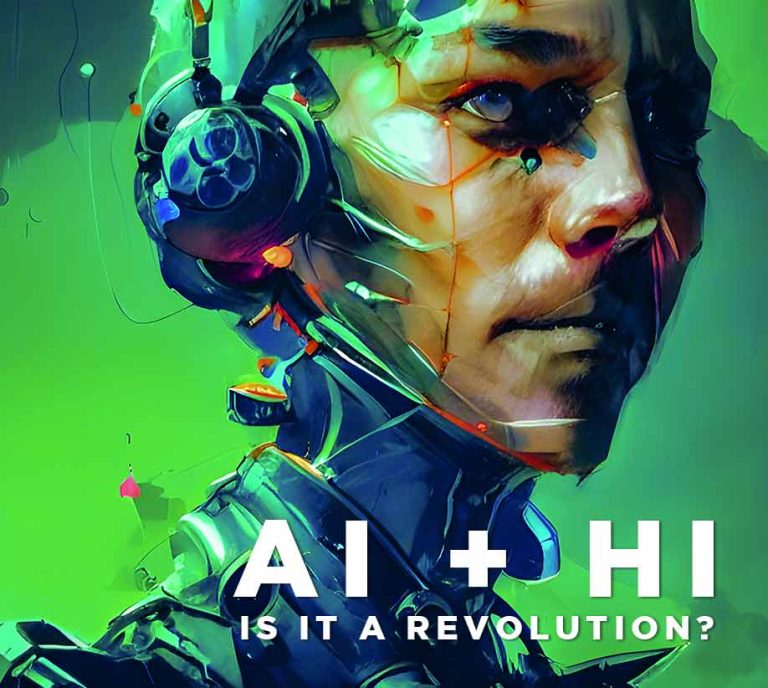
Collaboration of AI and HI: Transforming Leadership, Teams, and Analytics
Artificial Intelligence (AI) has been rapidly advancing in recent years, transforming industries and the way businesses operate. However, the most successful companies have realized that the true potential of AI lies in collaboration with human intelligence (HI). The integration of AI and HI has shown to provide significant benefits, from leadership transformations to in-house teams’ scale and efficiency.
Human intelligence refers to the cognitive abilities and mental capacity of human beings, including the ability to reason, learn, perceive, and solve problems.
Artificial intelligence refers to the development of computer systems that can perform tasks that typically require human intelligence, such as visual perception, speech recognition, decision-making, and language translation.
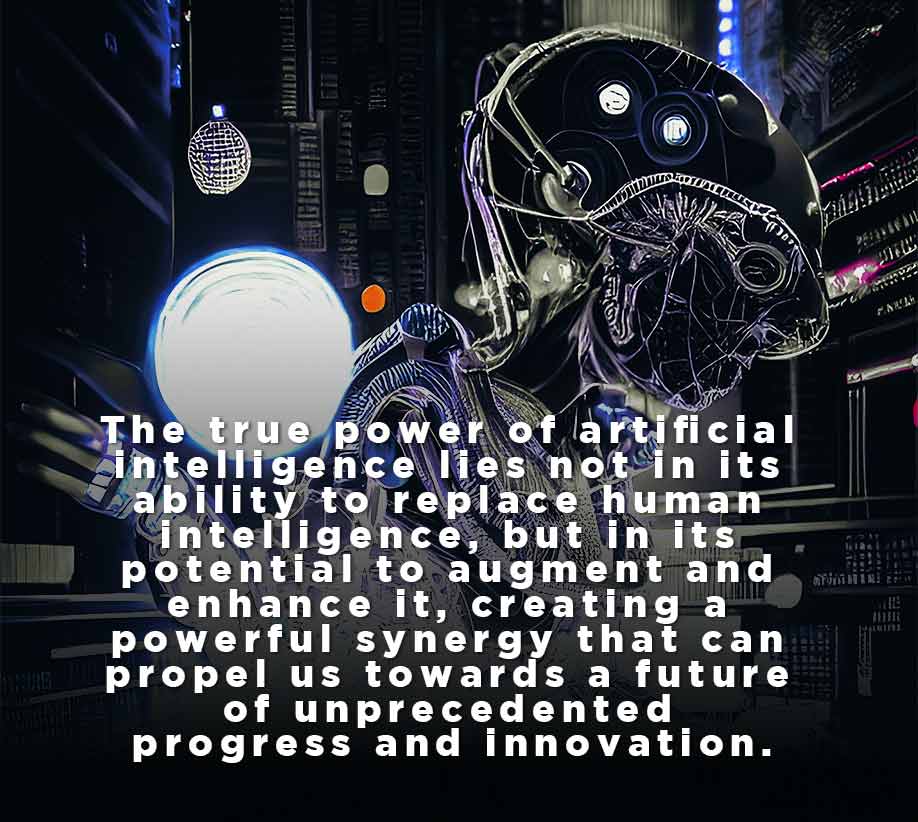
Leadership Transformations: AI-Enabled Decision-Making
The integration of AI with human intelligence has enabled leaders to make data-driven decisions, allowing for a more accurate and efficient decision-making process.
AI algorithms are capable of analyzing large amounts of data at a faster rate than humans, allowing for more informed and data-driven decisions. Leaders who embrace this technology will be able to make informed decisions and adapt to market trends quickly.
AI-Human Integration: Better Decision-making and Market Adaptation
Integrating AI with human intelligence is like having a high-powered telescope that allows you to see far beyond what the naked eye can perceive. With AI’s ability to analyze vast amounts of data at lightning-fast speeds, leaders can make more informed decisions, adapt to market trends quickly, and navigate through uncharted territories with ease.
The true power of artificial intelligence lies not in its ability to replace human intelligence, but in its potential to augment and enhance it, creating a powerful synergy that can propel us towards a future of unprecedented progress and innovation.
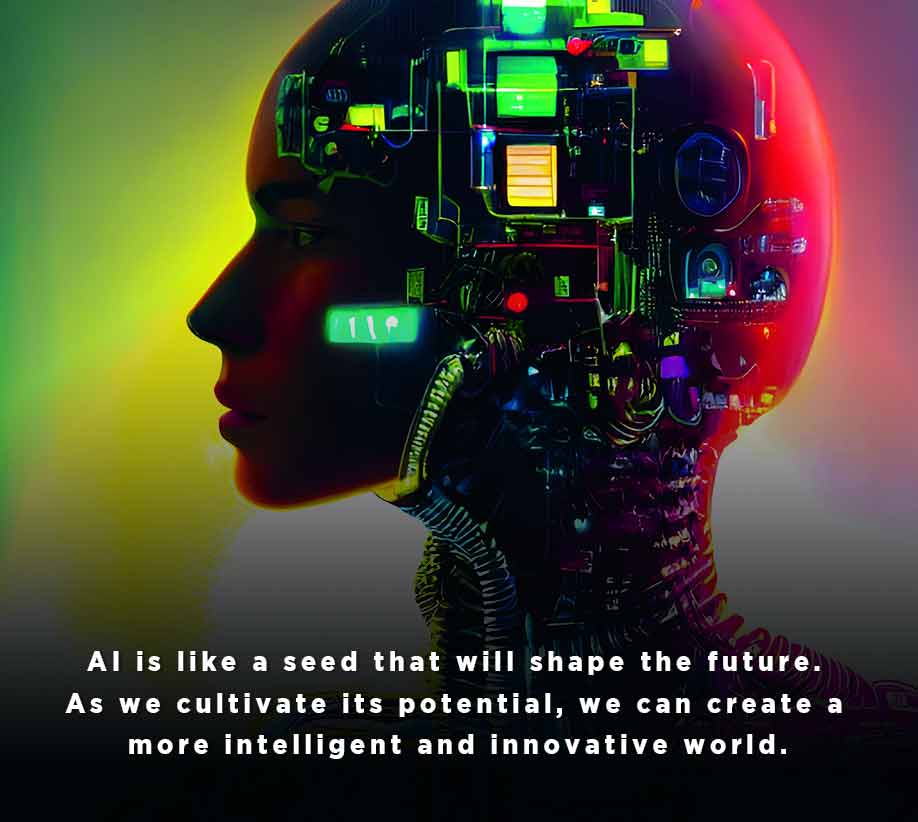
In-House Teams Scale and Efficiency: Augmented Intelligence
AI and HI collaboration has allowed for a new level of efficiency for in-house teams. AI-powered systems can handle repetitive and time-consuming tasks, freeing up time for human employees to focus on more complex tasks. This results in increased productivity and overall efficiency, allowing businesses to scale their in-house teams without adding new headcount.
AI Impacts with Analytics: Enhanced Customer Experience
The collaboration of AI and HI has opened up new opportunities for businesses to improve their customer experience. By analyzing customer data, businesses can tailor their products and services to their customers’ needs, creating a personalized experience that can enhance customer satisfaction and loyalty.
This level of personalization can be amazingly powerful as well as also lead to increased sales and revenue for businesses.
Content Opportunities: AI-Generated Content
AI and HI collaboration have also created new opportunities for content creation. AI-powered systems can generate content, such as articles, reports, and even social media posts, at a faster rate than humans, allowing businesses to generate more content and reach their audience more effectively.
Adoption Differences: The Need for Training and Education
While the collaboration of AI and HI has significant benefits, it is important to recognize the differences in adoption between AI and HI. AI algorithms require training and education to work effectively, and it is essential to have a team that is knowledgeable in both AI and HI.
The adoption of AI should also be a gradual process, with businesses starting small and scaling as their teams become more comfortable with the technology.
Examples of AI and HI Collaboration in Action
Many successful companies have already embraced the collaboration of AI and HI. For example, Amazon uses AI to analyze customer data to create personalized product recommendations, while Google’s search algorithms use AI to provide the most relevant search results.
Another example is IBM’s Watson, an AI-powered system that assists in medical diagnosis and treatment recommendations.
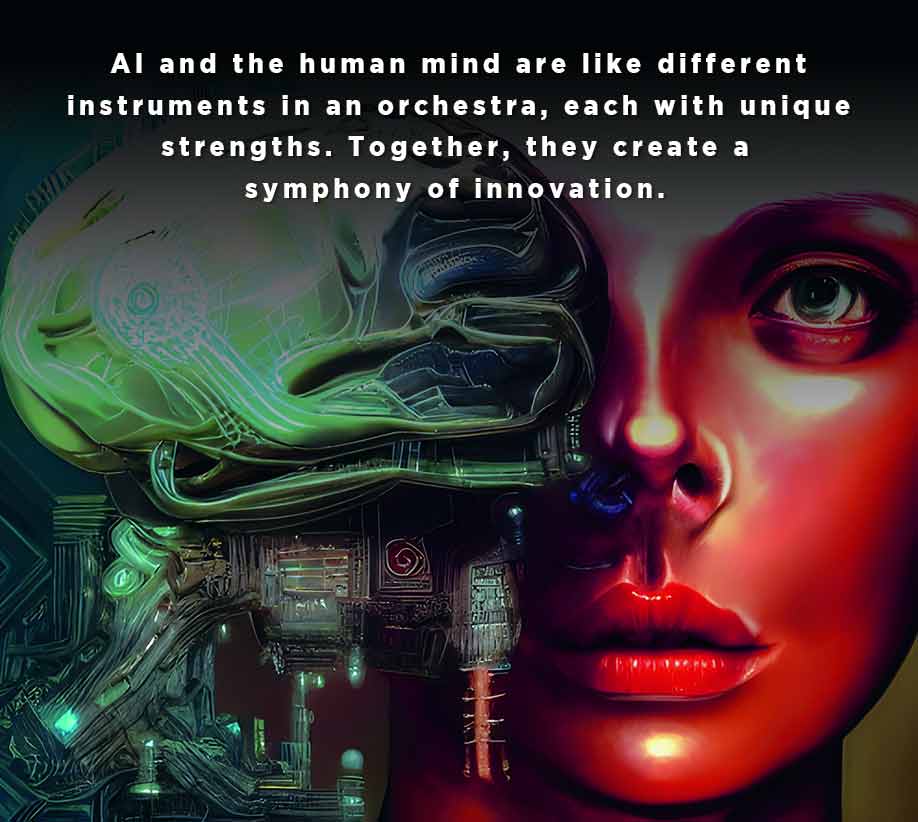
Benefits of AI and HI Collaboration:
- Improved decision-making through data-driven insights
- Increased in-house team efficiency and productivity
- Enhanced customer experience through personalized offerings
- More content opportunities through AI-generated content
Exploring the Dangers of AI: Bias and Discrimination in Decision-Making
Artificial intelligence (AI) has the potential to revolutionize many industries, from healthcare to transportation to manufacturing. However, as with any powerful tool, there are also potential dangers that come with its use. One of the biggest risks associated with AI is the possibility of bias and discrimination in decision-making. AI algorithms are only as unbiased as the data they are trained on, and if that data is biased, then the resulting decisions will be as well.
AI Automation: Balancing Efficiency with Job Displacement and Economic Equality
Another concern is the potential for AI to automate jobs and displace human workers. While AI has the potential to create new job opportunities and increase efficiency, it could also lead to job losses and economic inequality if not implemented thoughtfully. Additionally, the rise of AI could exacerbate existing power imbalances, with those who control AI systems having even more control over people’s lives.
AI Integration in Existing Roles
| Business Role | Currently Using AI | Future AI Integration |
|---|---|---|
| Customer Service Representative | Yes – Chatbots, voice assistants, automated email responses | Yes – Natural language processing, sentiment analysis, personalized recommendations |
| Sales Representative | Yes – Sales forecasting, lead scoring, customer segmentation | Yes – Predictive analytics, customer profiling, real-time sales coaching |
| Marketing Manager | Yes – Programmatic advertising, social media analytics, personalized email campaigns | Yes – AI-powered content creation, voice search optimization, automated ad targeting |
| Operations Manager | Yes – Predictive maintenance, supply chain optimization, demand forecasting | Yes – Robotic process automation, autonomous vehicles, predictive quality control |
| Financial Analyst | Yes – Fraud detection, risk management, algorithmic trading | Yes – AI-powered financial forecasting, intelligent investment advice, natural language processing for financial reports |
| HR Manager | Yes – Resume screening, candidate matching, employee engagement analysis | Yes – AI-powered performance evaluation, automated onboarding, predictive attrition modeling |
| IT Manager | Yes – Network security, cloud management, infrastructure automation | Yes – AI-powered anomaly detection, intelligent network optimization, predictive maintenance for hardware |
| CEO/Executive | Yes – Business intelligence, competitor analysis, strategic planning | Yes – AI-powered market forecasting, predictive analytics for M&A, AI-augmented decision-making |
| Product Manager | Yes – Market research, product recommendations, product optimization | Yes – AI-powered product development, predictive demand modeling, personalized product recommendations |
| Data Analyst | Yes – Data cleaning, data visualization, predictive analytics | Yes – AI-powered data exploration, natural language processing for data queries, automated data preparation |
| Supply Chain Manager | Yes – Inventory optimization, logistics optimization, supplier risk analysis | Yes – AI-powered demand forecasting, predictive quality control, real-time logistics management |
| Project Manager | Yes – Resource allocation, project scheduling, risk management | Yes – AI-powered project planning, automated project monitoring, real-time risk analysis |
| Business Development Manager | Yes – Lead generation, prospecting, customer segmentation | Yes – AI-powered sales forecasting, personalized outreach, predictive customer behavior modeling |
| Research and Development Manager | Yes – Scientific research, patent analysis, technology trends analysis | Yes – AI-powered drug discovery, predictive R&D modeling, automated technology assessment |
| Legal Counsel | Yes – Contract review, legal research, e-discovery | Yes – AI-powered legal document review, predictive legal analytics, automated contract negotiation |
| Executive Assistant | Yes – Scheduling, email management, note-taking | Yes – AI-powered meeting scheduling, automated document summarization, natural language processing for email responses |
| Social Media Manager | Yes – Content scheduling, social listening, influencer analysis | Yes – AI-powered content creation, real-time social listening, automated community management |
| Public Relations Manager | Yes – Media monitoring, sentiment analysis, crisis management | Yes – AI-powered media outreach, predictive crisis modeling, personalized messaging |
| Customer Success Manager | Yes – Customer feedback analysis, churn prediction, upsell modeling | Yes – AI-powered personalized recommendations, predictive customer behavior modeling, real-time customer support |
| Entrepreneur | Yes – Business plan evaluation, financial forecasting, market analysis | Yes – AI-powered idea validation, predictive startup success modeling, personalized fundraising recommendations |
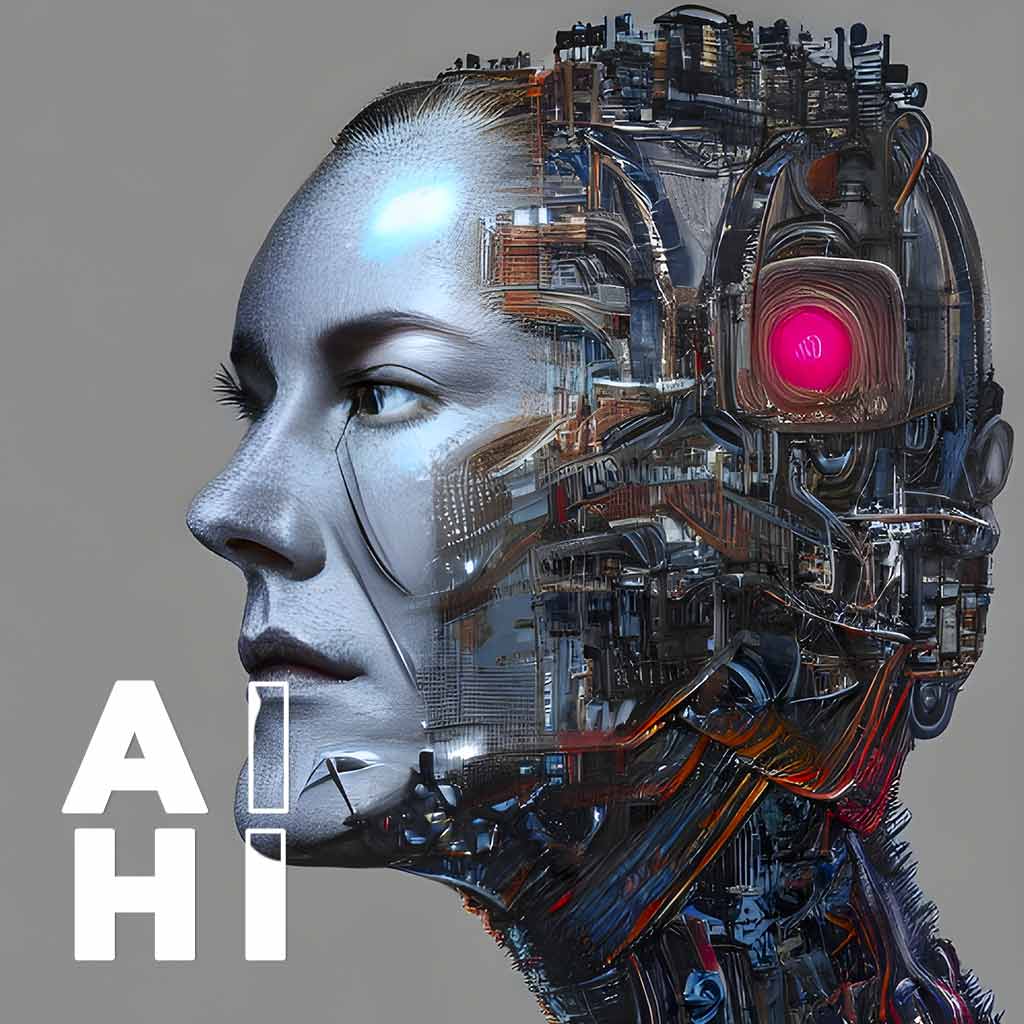
Challenges of AI and HI Collaboration:
- Need for training and education in both AI and HI
- Adoption differences between AI and HI
- Need for a gradual adoption process
Examples of AI and HI Collaboration:
- Amazon’s personalized product recommendations
- Google’s search algorithms
- IBM’s Watson for medical diagnosis and treatment recommendations
Artificial and Human Intelligence : A Game-Changer for Leaders
The collaboration of AI and HI has significant potential for businesses to improve their operations, productivity, and customer experience. However, it is important to recognize the challenges and take a gradual approach to adoption, with proper training and education for teams to fully realize the benefits of this collaboration.
As we embrace the integration of AI and human intelligence, we open up a world of endless possibilities. By harnessing the power of this synergy, we can transform the way we work, make smarter decisions, and navigate through challenges with ease. The future is bright, and we have the tools to shape it into a better, more innovative world.

